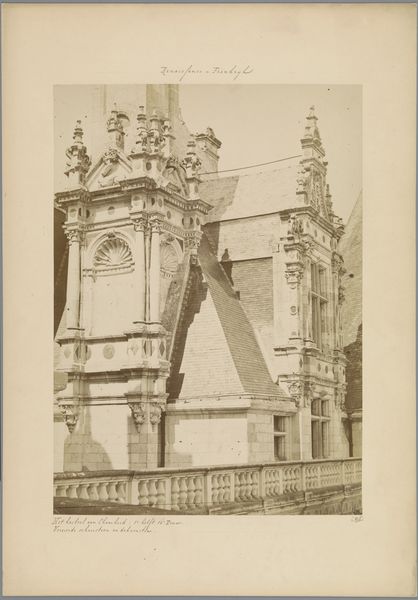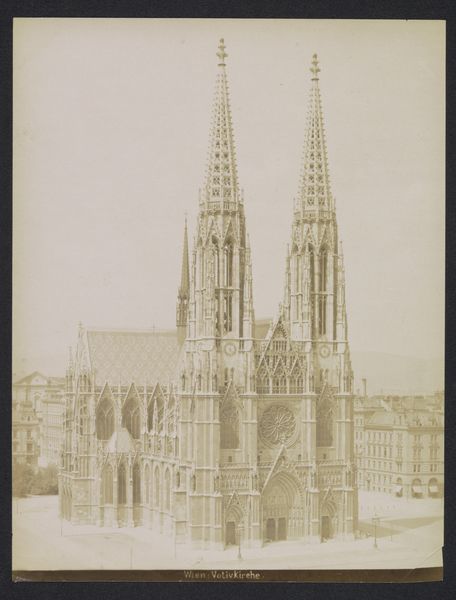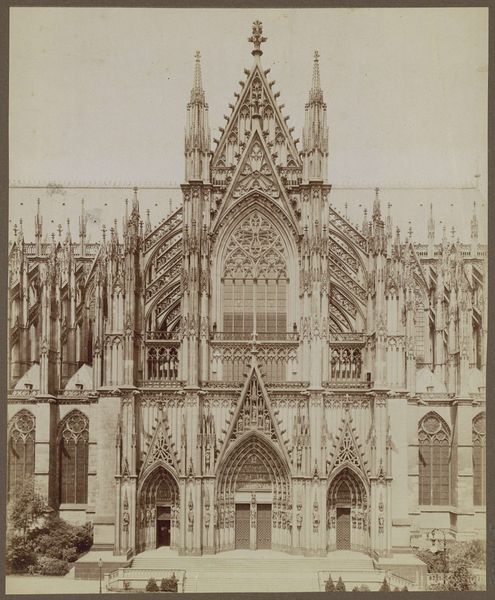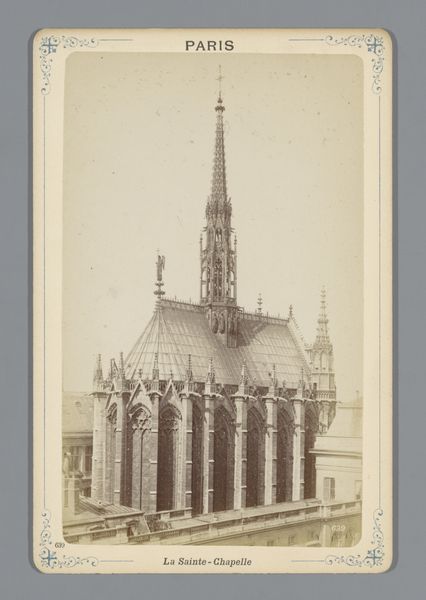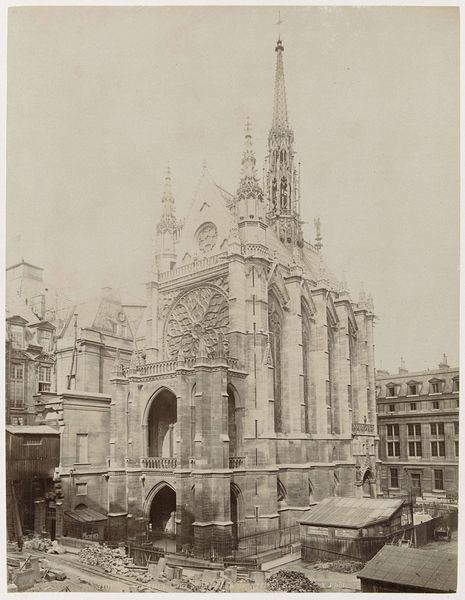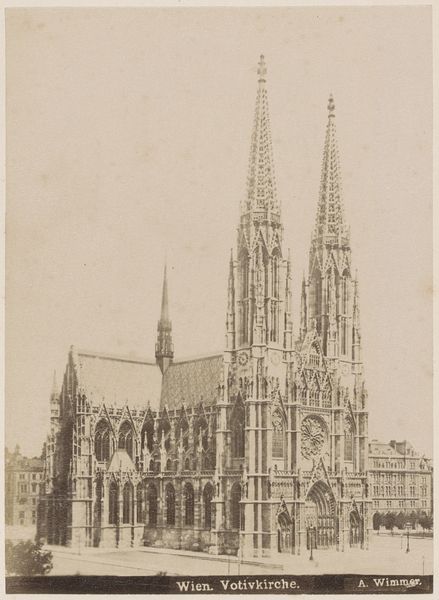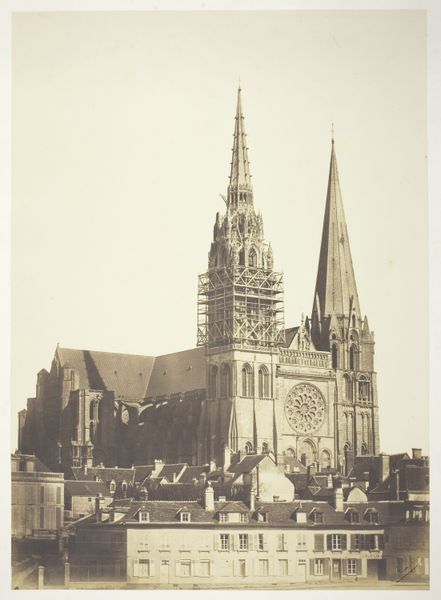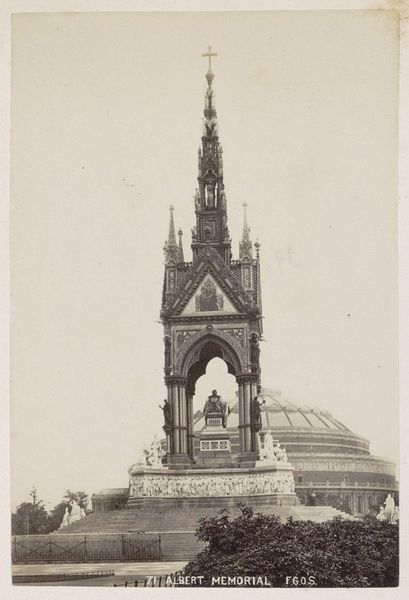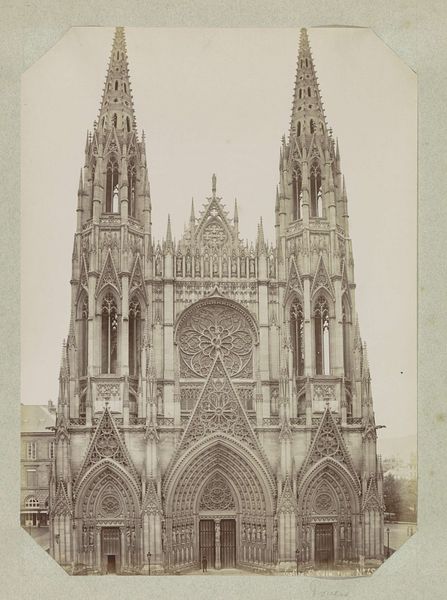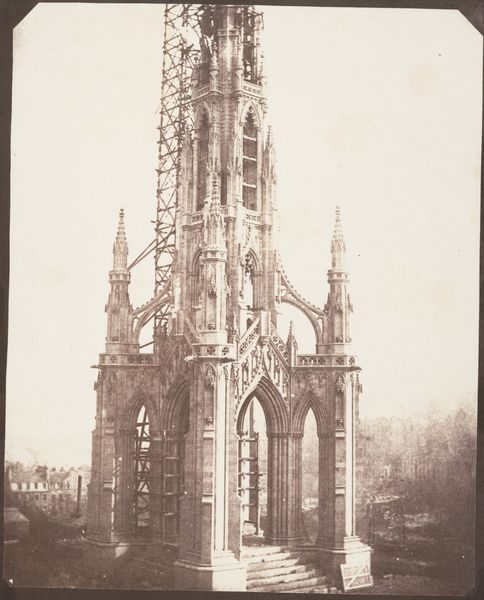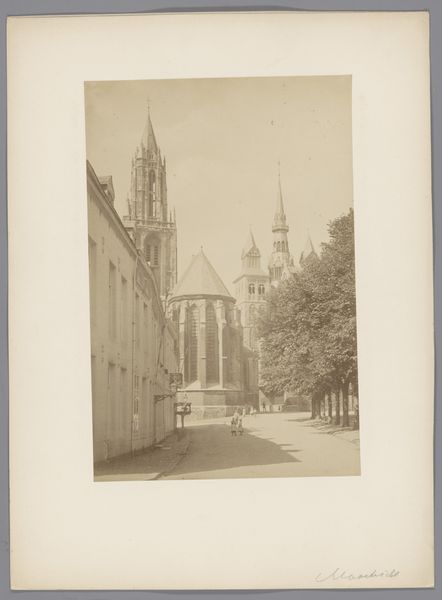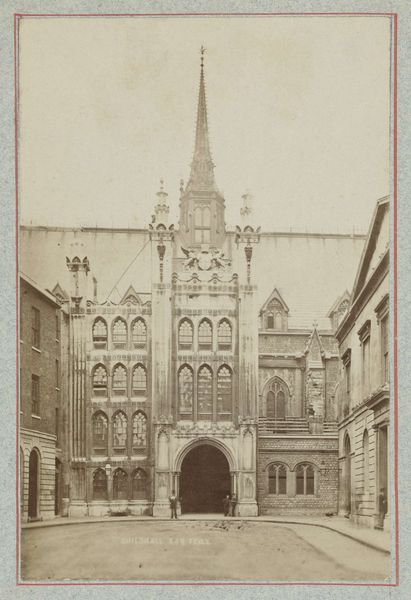
Dimensions: height 273 mm, width 208 mm, height 411 mm, width 304 mm
Copyright: Rijks Museum: Open Domain
Curator: This gelatin silver print captures the exterior of the Sainte-Chapelle in Paris, sometime between 1887 and 1900. It is simply signed "X phot." Editor: Oh, wow, isn't that striking? It feels like a memory, soft and dreamlike. The cathedral just ascends, almost ethereally, into the sky. The sepia tone gives it that ancient quality. Curator: Indeed. The choice of the gelatin silver process allowed for incredibly fine detail. Note how it captures the intricate gothic architecture—those pointed arches and that soaring spire. Sainte-Chapelle was conceived as a reliquary, a palace chapel that Louis IX used to house the Crown of Thorns. The monarchy inextricably entwined within the structure. Editor: Right, you get the sense of not just the monument itself but its place *in* something – as a very specific manifestation of royal authority. Makes me think about what power even means when it's embodied in architecture. Like, can stone really hold sway? Curator: Well, consider the chapel's location within the Palais de la Cité, the royal residence at that time. Its mere presence reinforced the monarch’s divine right to rule. Photographs like this disseminated that authority beyond its immediate geographic context. Editor: Hmm, a photo turning stone into symbols of power. Is there a change of experience taking place? I mean how is viewing it then or viewing it now, different? For me, now, removed from the historical weight, I'm drawn to the textures – the aged stone and that ethereal quality, it feels like something discovered or recovered from an archive. I also have to wonder who “X phot.” really was? There is such a anonymity of simply 'X'. Curator: That's a really salient question and speaks to the role of authorship in visual history. Photography in the late 19th century democratized image production, opening pathways to participate in its representation of society. Though signed “X phot.”, we’re presented with an opportunity to ponder not simply the artist, but the relationship between the chapel, power and representation. Editor: Precisely. Makes you appreciate the mystery and the multiple layers packed into what might first appear a simple architectural photograph. It feels less like an archival capture, more like an opening into contemplation itself. Curator: Well said. A moment of contemplation fostered by considering both image and context.
Comments
No comments
Be the first to comment and join the conversation on the ultimate creative platform.
